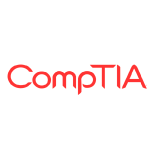COMPTIA LINUX+ CERTIFICATION (EXAM XKO-004)
Course Overview
This course is designed for IT professionals whose primary job responsibility is the management of servers and other devices running the Linux operating system. A typical student in this course should have at least nine months of hands-on Linux experience and at least one and a half years of IT experience in other computing environments. The target student should wish to expand their skill set to support their career in Linux system administration and operation. This course is also designed for students who are seeking the CompTIA Linux+ certification and who want to prepare for Exam XK0-004. The Linux+ certification can validate the student’s understanding and skill in configuring, monitoring, and supporting Linux systems.

Course Objectives
What you will learn :
- Hardware and system configuration
- Systems operation and maintenance
- Security measures and operations
- Linux troubleshooting and diagnostics
Course Prequisites
Foundational experience with general systems administration procedures, some hands-on exposure to one or more Linux distributions, as well as knowledge of computing hardware and basic networking and cybersecurity concepts.
Target Audience
This course is intended for students with a basic knowledge of Linux and its most common utilities and text editors.
Foundational IT knowledge equivalent to the CompTIA A+ certification and CompTIA Network+ certification is recommended.
Course Outline
Lesson 1: Performing Basic Linux Tasks
- Identify the Linux Design Philosophy
- Enter Shell Commands
- Get Help with Linux
Lesson 2: Managing Users and Groups
- Assume Superuser Privileges
- Create, Modify, and Delete Users
- Create, Modify, and Delete Groups
- Query Users and Groups
- Configure Account Profiles
Lesson 3: Managing Permissions and Ownership
- Modify File and Directory Permissions
- Modify File and Directory Ownership
- Configure Special Permissions and Attributes
- Troubleshoot Permissions Issues
Lesson 4: Managing Storage
- Create Partitions
- Manage Logical Volumes
- Mount File Systems
- Manage File Systems
- Navigate the Linux Directory Structure
- Troubleshoot Storage Issues
Lesson 5: Managing Files and Directories
- Create and Edit Text Files
- Search for Files
- Perform Operations on Files and Directories
- Process Text Files
- Manipulate File Output
Lesson 6: Managing Kernel Modules
- Explore the Linux Kernel
- Install and Configure Kernel Modules
- Monitor Kernel Modules
Lesson 7: Managing the Linux Boot Process
- Configure Linux Boot Components
- Configure GRUB 2
Lesson 8: Managing System Components
- Configure Localization Options
- Configure GUIs
- Manage Services
- Troubleshoot Process Issues
- Troubleshoot CPU and Memory Issues
Lesson 9: Managing Devices
- Identify the Types of Linux Devices
- Configure Devices
- Monitor Devices
- Troubleshoot Hardware Issues
Lesson 10: Managing Networking
- Identify TCP/IP Fundamentals
- Identify Linux Server Roles
- Connect to a Network
- Configure DHCP and DNS Client Services
- Configure Cloud and Virtualization Technologies
- Troubleshoot Networking Issues
Lesson 11: Managing Packages and Software
- Identify Package Managers
- Manage RPM Packages with YUM
- Manage Debian Packages with APT
- Configure Repositories
- Acquire Software
- Build Software from Source Code
- Troubleshoot Software Dependency Issues
Lesson 12: Securing Linux Systems
- Implement Cybersecurity Best Practices
- Implement Identity and Access Management Methods
- Configure SELinux or AppArmor
- Configure Firewalls
- Implement Logging Services
- Back-Up, Restore, and Verify Data
Lesson 13: Working with Bash Scripts
- Customize the Bash Shell Environment
- Identify Scripting and Programming Fundamentals
- Write and Execute a Simple Bash Script
- Incorporate Control Statements in Bash Scripts
Lesson 14: Automating Tasks
- Schedule Jobs
- Implement Version Control Using Git
- Identify Orchestration Concepts
Lesson 15: Installing Linux
- Prepare for Linux Installation
- Perform the Installation
What Our Students Have to Say


